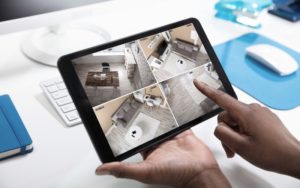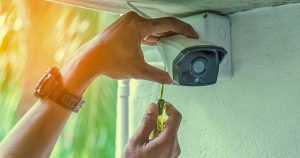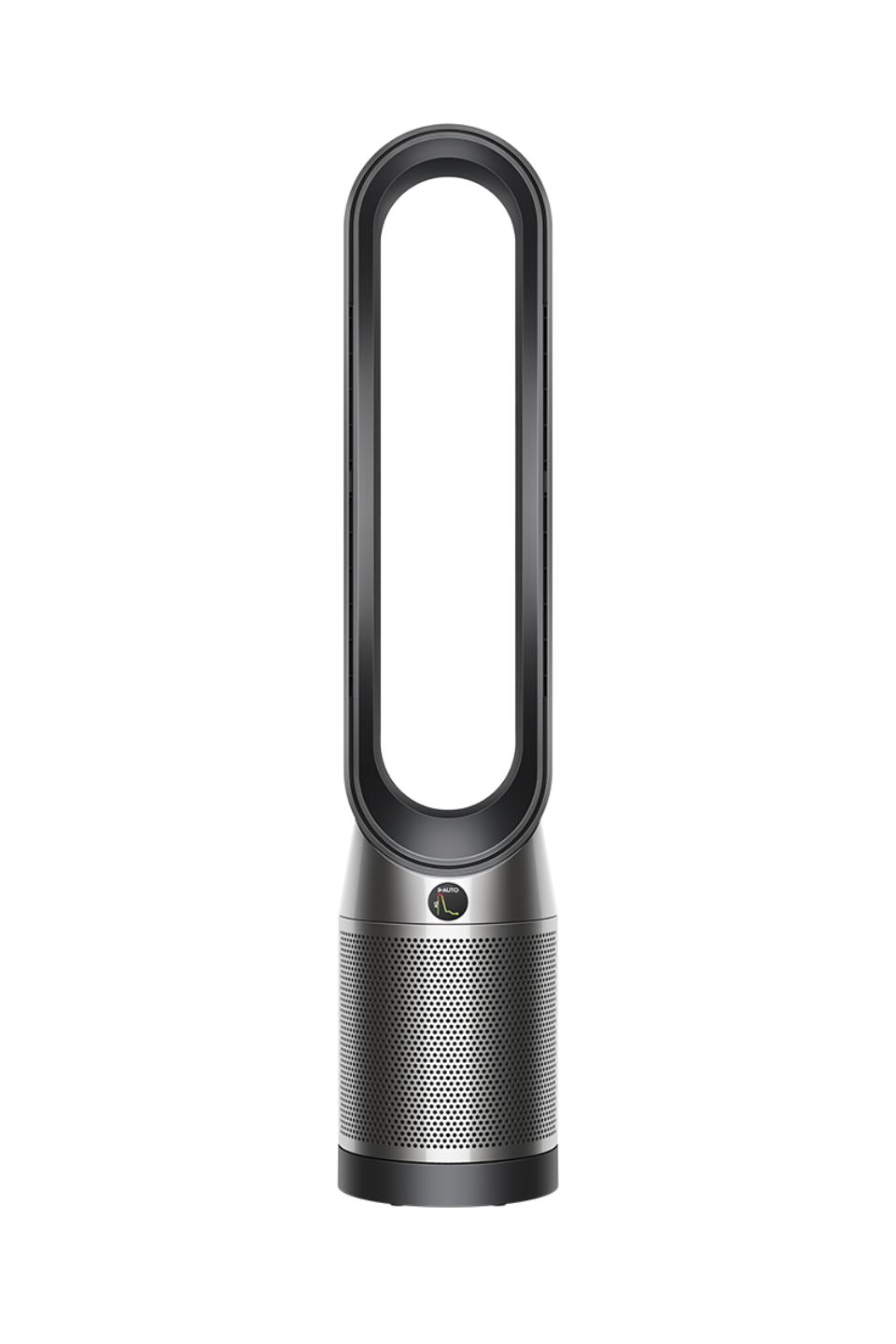Best Air Purifiers of 2022
The Stadler Roger Big air purifier boasts some of the best clean air delivery rates (CADRs) in the industry for dust, pollen, and smoke. Although it costs around $570, the Roger Big provides high value because it handles rooms up to 1,100 square feet—three times the square footage of the more expensive Samsung Cube.
It does fall short in a few key areas, including loud operation and high energy use. We’ve found other models to fill those gaps and help you find the best air purifier for your needs.
You’ll see “CADR” a lot in this article. It stands for “clean air delivery rate.” Developed by the Association of Home Appliance Manufacturers (AHAM), it measures how fast an air purifier can clear pollutants from a 30m2 test chamber.1
- The AHAM recommends using an air purifier with a CADR equal to two-thirds of a room’s area in square feet for best results.
- For filtering wildfire smoke, choose a purifier with a CADR equal to the room’s area in square feet.
Best home air purifiers
- : Best overall
- : Quietest air purifier
- : Best for budgets
- : Best value
- : Best control options
- : Best portable air purifier
1. Stadler Roger Big: Best overall
The Stadler Roger Big air purifier won us over with four levels of filtration, top-of-the-line CADRs, and smart features like app control. Although you’ll lay down a decent chunk of cash for this model, its price-per-square-foot (about $0.61) means you get a lot of clean air for your money.
The Roger Big combines a HEPA filter with an activated carbon filter and two washable pre-filters. The pre-filters catch large pieces of debris like dust, pet hair, and pet dander, extending the life of the HEPA filter. The carbon filter cuts down on odor and gaseous pollutants.
No other air purifier on our list has four filters.
We’re also impressed by the large area the Roger Big tackles—up to 1,100 square feet. But if that’s too much coverage and you don’t want to overspend, check out the Roger Big’s cousins:
- Roger: cleans up to 710 square feet and costs around $500
- Roger Little: cleans up to 355 square feet and costs around $330
The only downside to such a powerful air purifier is that it needs a lot of electricity to do its job. It’s still an Energy Star-certified model—as are all of our top picks—but it uses more energy than other models at 769.8 kWh per year.
The average US household pays 10.54 cents per kilowatt-hour.2 It would cost $81.14 per year to operate the Roger Big.
You’d see a $6.76 increase on your monthly energy bill.
Industry-leading CADRs
If exceptionally clean air is your number-one priority in a home air purifier, this is the model to get. The Roger Big cycles through all the air in a room five times in one hour. That means you’ll breathe totally fresh air every 12 minutes.
It also has the best CADRs of any home purifier on our list:
- Pollen-free CADR: 450 cfm
- Dust-free CADR: 400 cfm
- Smoke-free CADR: 418.7 cfm
To put these numbers in perspective, 450 cfm is the industry-leading CADR. The only way to get an air purifier with a 450 cfm CADR across all three pollutant categories is to purchase an industrial model.
Smart air purifier
The Roger Big features an air quality indicator light. If your indoor air quality is already good, you can keep the purifier on a lower setting. It’ll run quieter and use less energy.
If pollutants enter your home, the Roger Big senses them and turns the indicator light to orange (medium air quality) or red (poor air quality). You’ll know it’s time to crank up the settings until the indicator light turns blue again.
The Roger Big also connects to Wi-Fi so you can control it through an app. It doesn’t integrate with smart hubs, so there’s no voice control option.
2. Samsung Cube: Quietest air purifier
If the last thing you want to hear at night is a spinning motor, you might want to splurge for the Samsung Cube. Its quietest mode reaches just 18 dB. But when you turn it on full blast, it hums at 50 dB—about the same noise level as a refrigerator.
We like a lot of things about the Samsung Cube, including a washable pre-filter and an air quality indicator. You can also control it with your voice by connecting it to Amazon Alexa, Google Assistant, or Samsung Bixby.
On the surface, the Samsung Cube’s CADRs don’t seem spectacular:
- Pollen-free CADR: 185 cfm
- Dust-free CADR: 205 cfm
- Smoke-free CADR: 200 cfm
But Samsung recommends using the Cube in an area less than 310 square feet (about the size of a master bedroom), which means it actually meets the AHAM’s two-thirds rule. The Samsung Cube is also stackable, so you can purchase a second one to help in a larger space.
3. Winix 5300-2: Best for budgets
The Winix 5300-2 offers four stages of filtration: a washable pre-filter, an activated carbon filter, a true HEPA filter, and the PlasmaWave “permanent filter.” But cool technology isn’t the only reason we like this Winix air purifier─it has impressive CADRs and a swoon-worthy price tag.
The Winix 5300-2 completely replaces the air in a 360 square-foot room five times in one hour with these CADRs:
- Pollen-free CADR: 246 cfm
- Dust-free CADR: 243 cfm
- Smoke-free CADR: 232 cfm
This isn’t the most convenient air purifier on the market since it lacks a remote, mobile app, or smart hub connectivity. But you don’t really need to be hands-on with it. The 5300-2 automatically adjusts to one of its five fan speeds whenever it detects a change in indoor air quality.
If you do want a remote, try the Winix 5500-2 for about $250.
4. Alen BreatheSmart Flex: Best value
Although it’s on the expensive side, the Alen BreatheSmart Flex gives you the best value for your money. It cleans up to 700 square feet. We also like the selection of designer panels that allow you to hide the Breathesmart Flex in plain sight.
The Alen Breathesmart Flex isn’t a smart air purifier, so there’s no voice or app control and no air quality indicator. There’s also no special tech to keep it quiet, so it can reach up to 55 dB (about as loud as a coffee maker).
We love that the Alen Flex won’t run up your electricity bill as much as some other models (It actually uses less energy per year than the less powerful Filtrete.) It also offers better dust-free and pollen-free CADRs than the more expensive Samsung Cube:
- Pollen-free CADR: 245.4 cfm
- Dust-free CADR: 208.8 cfm
- Smoke-free CADR: 191 cfm
If you’re battling wildfire smoke, you can get the Alen BreatheSmart Flex with a more substantial carbon filter to cut down on odors.
5. Dyson Purifier Cool TP07: Best control options
The Dyson Purifier Cool TP07 is the only air purification system that you can control with a traditional remote, a smartphone app, and with your voice through Amazon Alexa, Google Home, or Apple HomeKit.
We also like that it has 10 fan speeds and auto-adjusts when it detects airborne pollutants in the room, eliminating the need for you to monitor an air quality indicator light. But at 61.5 dB, the TP07 runs louder than the other air purifiers on our list.
The Purifier Cool TP07 is also one of the most energy-efficient models we could find, so it’s a good choice if you’re concerned about running up the electricity bill.
Head-scratching CADR test results
The Dyson Purifier Cool TP07s CADRs are very low:
- Pollen-free CADR: 95.9 cfm
- Dust-free CADR: 89.8 cfm
- Smoke-free CADR: 80.7 cfm
Our takeaway is that the Pure Cool TP07 might not be powerful enough for an 800 square-foot room like Dyson suggests, but it should do just fine in a small living room or bedroom.
6. Bissell MYair Pro: Best portable air purifier
The Bissell MYair Pro is quiet (27 dB), lightweight (less than five pounds), and small. We think that’s the trifecta for a portable, work-friendly air purifier. The MYair Pro only covers about 100 square feet, so its home-based applications are limited to relatively small bedrooms or bathrooms.
The MYair Pro includes three filters: a pre-filter, a HEPA filter, and an activated carbon filter. It offers three fan speeds, a filter change indicator, and a night light.
Its CADRs are on the low side, but that’s to be expected with a portable air purifier that’s only meant for a 10-by-10 space.
- Pollen-free CADR: 82 cfm
- Dust-free CADR: 78 cfm
- Smoke-free CADR: 71 cfm
The Bissell MYair Pro uses about 159.9 kWh/year, which is a lot of energy when you consider how much square footage the unit handles. But if you do end up using it as a desk-only purifier, that’s not such a big deal because you won’t run it 24/7.
More brands we considered
LG PuriCare
The LG PuriCare’s closest competitor is the Samsung Cube. They both cost around $700, clean a maximum area of 310 square feet, and work with Google Assistant and Amazon Alexa. Their CADRs are very similar as well (around 200 cfm across all categories).
The LG PuriCare is louder than the Samsung Cube, registering down to 25 dB versus the Cube’s 18 dB. This is the main reason we chose to feature the Samsung Cube—it’s the quietest air cleaner. Period.
But the PuriCare does have one cool feature missing in the Samsung Cube: auto air quality adjustments. It lights up to tell you when the indoor air quality decreases, but you don’t have to lift a finger. The PuriCare kicks into a higher setting until the air quality improves.
Filtrete Air Purifier
Retailing at around $85, the Filtrete Air Purifier is one of the cheapest air filters on the market. It only has one filter but manages to filter up to 170 square feet with these clean air delivery rates:
- Pollen-free CADR: 120 cfm
- Dust-free CADR: 110 cfm
- Smoke-free CADR: 98 cfm
It has no extra features—not even a remote—and tends to run loud (40–60 dB).
Honeywell Insight
We hate letting down our readers, so we avoid recommending products that are out of stock. That’s the only thing that stopped us from listing the Honeywell Insight as the “best value” air purifier. Its CADRs are second only to the Roger Big, and it processes the air in a 500 square-foot room five times in one hour. Best of all, it costs around $290.
Well, it did cost that much. Then it sold out—everywhere. We want to mention it anyway because it’s worth snatching it up if you can find it.
RabbitAir BioGS 2.0
The RabbitAir BioGS 2.0 used to be our “quietest air purifier” pick. Then the Samsung Cube came along. Although 22.8 dB is definitely quiet, it just can’t compete with the Cube’s 18 dB. The Samsung Cube also outperforms the RabbitAir in terms of CADRs.
But if the Cube is too expensive, the RabbitAir is a great alternative. It retails for about $370.
The RabbitAir BioGS 2.0 also includes an ionizer setting. If you turn this on, the unit will emit ozone, which is harmful to respiratory health.3 We recommend keeping the ionizer off.
Levoit air purifiers
Levoit air purifiers were on our radar because they’re best-sellers. They’re affordable (typically less than $100) and have decent CADRs in relation to the area they cover. But we encountered a discrepancy between the type of air filters listed on Levoit’s product pages (true HEPA) and those listed in Energy Star’s database (HEPA type).
Levoit does say consumers can replace the filters with any kind, meaning you could discard the provided filter and purchase a true HEPA to be sure the purifier catches fine airborne particles.
With that said, we liked the Levoit Core 200S model because it’s affordable (around $90) and connects to a smartphone app, Google Assistant, or Amazon Alexa. It’s suitable for small rooms up to 183 square feet and runs at 24 dB on its lowest setting.
Ozone generators
Any air purifier that emitted ozone was pulled out of the running for our top picks. Brands excluded for ozone emissions include:
- Blueair
- GermGuardian
- Homedics
- Medify Air
Video: Home air quality
Check out our YouTube channel for more videos and subscribe to catch new videos from us every week.
Final word
The Stadler Form Roger Big air purifier cleans an incredible volume of air in a short amount of time and can even filter virus particles and bacteria. It’s a worthwhile investment if you can afford its hefty purchase price.
How we reviewed the best air purifiers
- 245 air purifiers considered
- 20 hours of research
- 16 data points compared
Air purifiers run constantly, so it’s important to choose an energy-efficient model to reduce their long-term cost. We decided to only consider Energy Star-rated air purifiers.4
Next, we looked at air purifier technology and decided to stick with “true HEPA” filters. HEPA filters block the tiniest particles (down to 0.3 microns) at 99.7% efficiency, which means they can trap bacteria and some viruses.5 “HEPA type” filters can’t do this.
We didn’t recommend UV or ionic air purifiers because they generate ozone. Ozone is great to have in the atmosphere way above our heads, where it blocks UV radiation from the sun. But ground-level ozone can damage your lungs and make it difficult to breathe.3
After narrowing the playing field with these criteria, we compared performance specifications like clean air delivery rate (CADR), how loud the unit sounds, how much energy it requires per year, and its price per square foot of coverage. We liked seeing multiple fan speeds, pre-filters, and indicator lights. When we couldn’t find specifications online, we contacted brands directly.
Air purifier FAQ
Any “true HEPA” air purifier can block the COVID-19 virus with up to 99.9% efficiency.6 Each of the air purifiers on our list uses a true HEPA filter .
First, measure the square footage of the room so you know what size air purifier to look for. An undersized air purifier won’t clean a large room effectively, and an oversized air purifier will cost more money to purchase and use.
Next, consider the filter. We recommend a true HEPA filtration system. If you’re also concerned about cigarette smoke or pet odor, look for an air cleaner with an activated carbon pre-filter. Each of our top picks features both a true HEPA filter and an activated carbon filter.
If you have a very specific need, such as filtering out wildfire smoke particles, look up the clean air delivery rate (CADR) for that pollutant. Air cleaners have three CADRs:
- Smoke CADR
- Pollen CADR
- Dust CADR
A higher number is better.
Next, consider how much energy the air purifier uses each year. Air purifiers stay on all the time, which increases your electricity bill. Energy is measured in kilowatt-hours (kWh), and a lower number is better.
Prioritize a unit’s portability if you anticipate bringing it with you on vacation or moving it from room to room. Size, weight, and casters can make a big difference.
If you can afford it, having an air purifier in every room ensures your indoor air quality stays as fresh as possible.
Alternatively, purchase a lightweight air purifier (or one with wheels) and move it from room to room as you go about your day. Keep it in the living room when you’re watching TV in the evening, and take it with you into the bedroom while you sleep.
If you don’t want to hassle with moving it from room to room, your bedroom is the best place to keep the air cleaner so you can breathe fresh air all night.
It’s best to run your air purifier constantly. We like models with air quality indicator lights, like the Roger Big or Samsung Cube. If the air quality is poor, you can run the purifier at a higher fan speed to process more air. Otherwise, use the low speed for 24/7 maintenance.
For a “set it and forget it” air cleaner, try the Winix 5300-2 and the Dyson Purifier Cool TP07. They automatically adjust the fan speed according to air quality, taking all the guesswork out of the equation.
Related articles on SafeWise
Sources
- Association of Home Appliance Manufacturers, “Frequently Asked Questions about Testing of Portable Air Cleaners,” September 14, 2020. Accessed December 9, 2021.
- US Energy Information Administration, “State Electricity Profiles,” November 2, 2020. Accessed December 9, 2021.
- United States Environmental Protection Agency, “Health Effects of Ozone Pollution.” Accessed December 9, 2021.
- Energy Star, “Energy Star Certified Room Air Cleaners,” October 17, 2020. Accessed December 9, 2021.
- Vannan Kandi Vijayan, Lung India, “Enhancing Indoor Air Quality—The Air Filter Advantage,” September 2015. Accessed December 9, 2021.
- Noah Bergman, et. al, New Jersey’s Governor’s School of Engineering and Technology, “Designing and Simulating a Smart SARS-CoV-2 Air Purifier,” July 18, 2020. Accessed December 9, 2021.
Product prices and availability are accurate as of the date/time indicated and are subject to change. Any price and availability information displayed on Amazon at the time of purchase will apply to the purchase of this product. Safewise.com utilizes paid Amazon links.
Certain content that appears on this site comes from Amazon. This content is provided “as is” and is subject to change or removal at any time.
Recent Articles




The post Best Air Purifiers of 2022 appeared first on SafeWise.
Article source here: Best Air Purifiers of 2022






